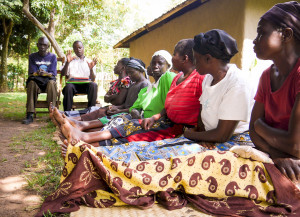The Role of Religious Leaders and Faith Communities
In this I-Kit, “religious leader” refers to leaders within religious groups, and “faith communities” refers to people who belong to a religious group.
Religious leaders and faith communities are the largest and best-organized civil institutions in the world, claiming the allegiance of billions of believers and bridging the divides of race, class and nationality. More than any other civil society representatives, religious leaders have the experience of establishing and working with international partnerships. Their expertise can greatly benefit the global breastfeeding effort.
Religious leaders are often the most respected figures in their communities. Buddhist monks and nuns, imams, pastors, priests, punjaris, and leaders of other faith communities play a powerful role in shaping attitudes, opinions and behaviors because their members trust them. Community members and political leaders listen to religious leaders.
Especially at the family and community level, religious leaders have the power to raise awareness and influence attitudes, behaviors and practices. They can shape social values in line with faith-based teachings. At these levels, religious leaders can:
- Become aware of optimal breastfeeding practices and motivate their congregations to promote mothers’ right to breastfeed.
- Motivate and educate followers to adopt other healthy behaviors that are compatible with religious teachings.
- Model appropriate and supportive behaviors. For example, women leaders with infants or young children can breastfeed, and male leaders and “mothers of the church” can support their wives and daughters in breastfeeding).
- Facilitate communication within families to create a more supportive environment for the woman who is breastfeeding.
- Remind families of the husband’s responsibility to support the wife before and after childbirth.
- Influence communities and families to support women to only breastfeed for the first six months and to continue breastfeeding for the child’s first two years.
- Establish breastfeeding support groups.
- Create space in their facilities for women to breastfeed in private during services and events if that is the norm or mothers’ preference.
- Share messages about the benefits of breastfeeding and risks of sub-optimal feeding practices to parents.
- Connect with religious leaders and others to create a movement to support optimal breastfeeding practices.
Religious leaders also have the power to promote and support public policy that protects the health of mothers, children, and families. In the advocacy arena, religious leaders can:
- Magnify the voices of the poor where laws and policies are made.
- Influence the Ministry of Labor to make it easier for working women, for example, to exclusively breastfeed for six months.
- Influence the MOH to put in place policies to keep the mother and child together in the hours after birth so breastfeeding can begin right away.
- Advocate to the relevant Ministries not to distribute formula to mothers of children under six months old who do not really need it.
- Make it harder for companies to market infant formula to women who do not truly need it.
Religious leaders and faith communities can and do speak out for children. They are well placed to add their moral and spiritual leadership to the local and global effort to save lives by improving breastfeeding practices.
Next: Breastfeeding Basics


